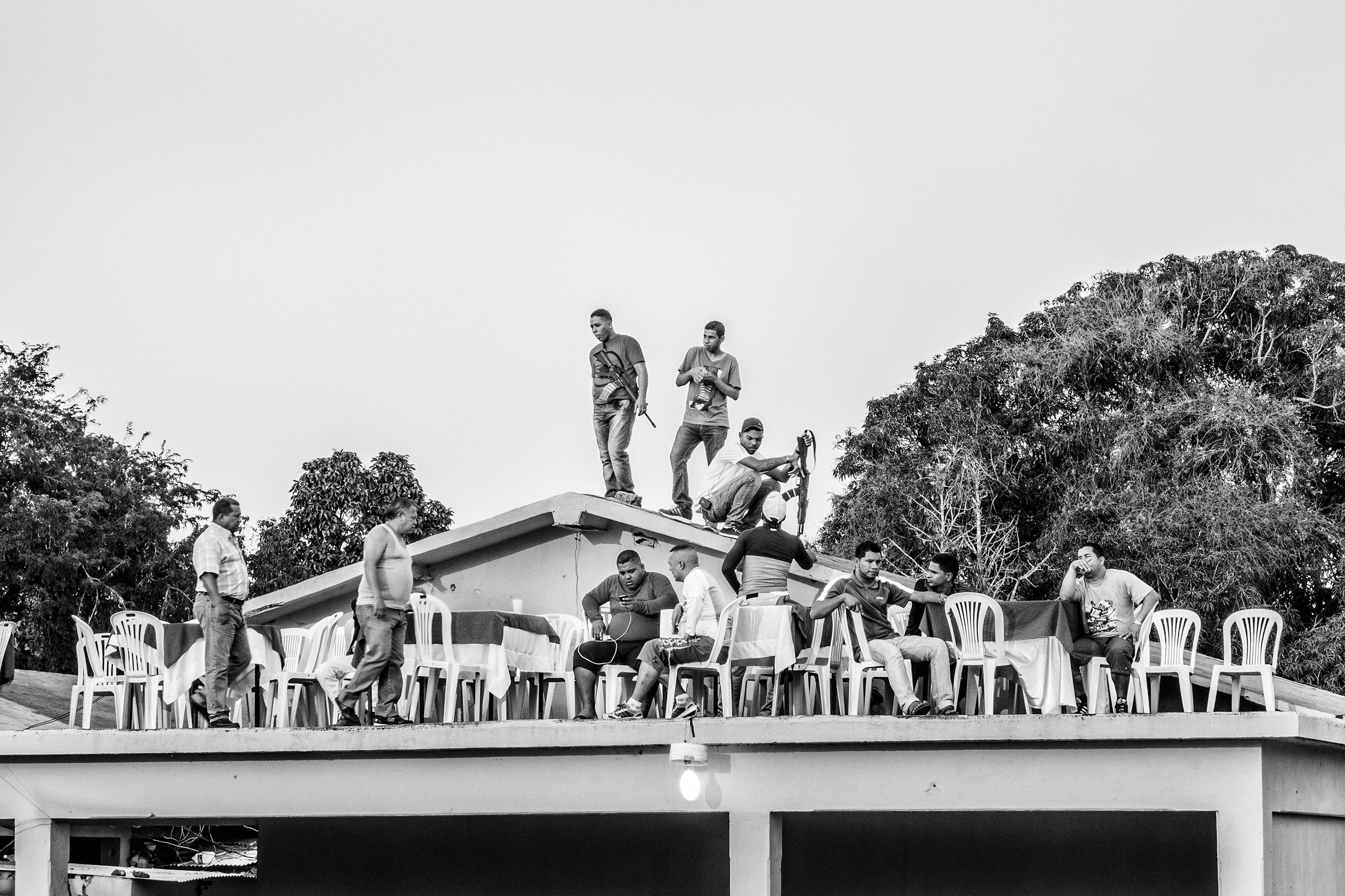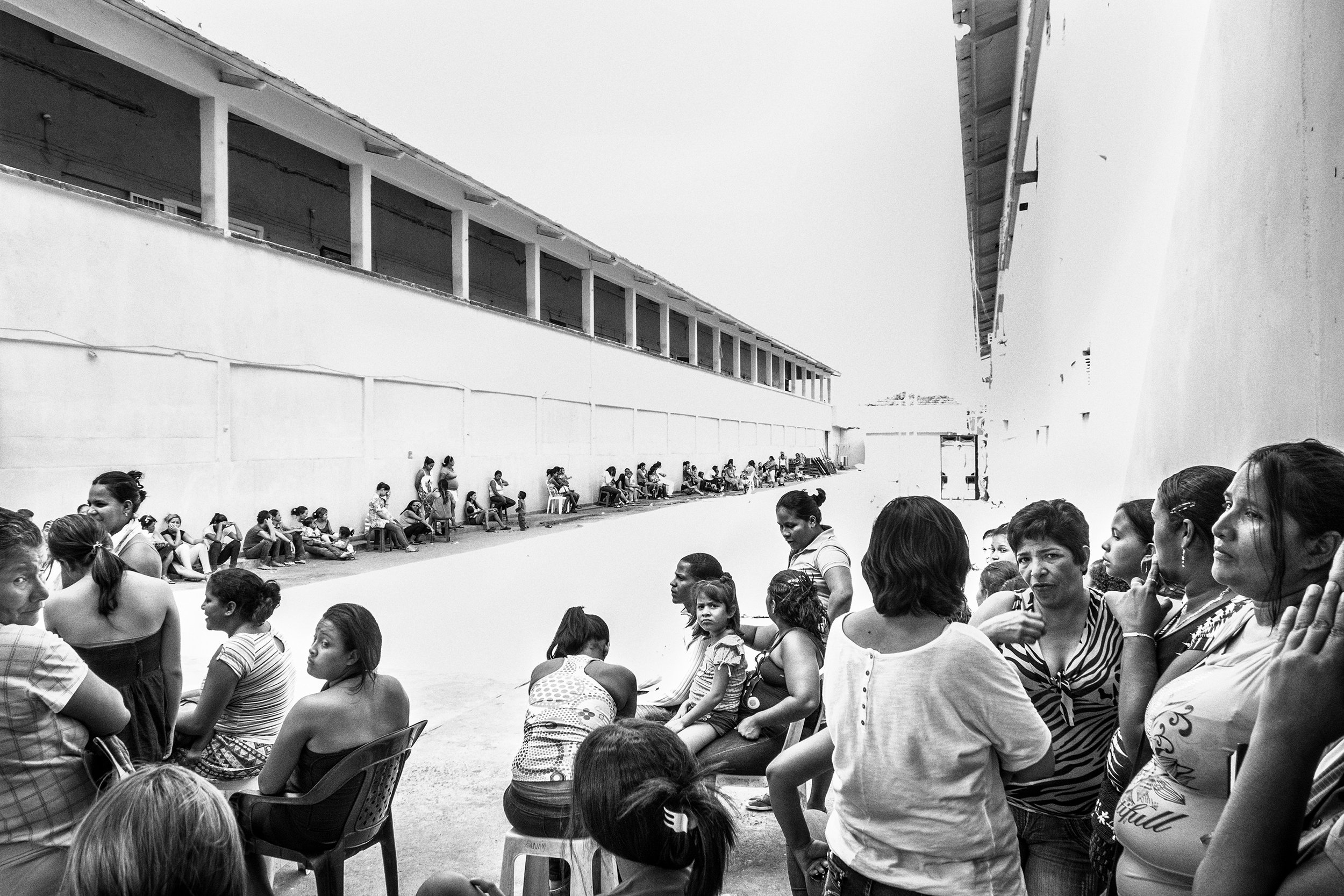On The Inside: Venezuelan Prisons under inmate control
Vista Hermosa is one of the Venezuela’s most notorious prisons. It was built in the 1950s to house 650 inmates, but now it houses more than triple that number. As violence plagued the country, the prison population grew and clashes between prisoners and guards became common. Rather than improving conditions, prison authorities have allowed them to descend into near-chaos.
Since the ‘Pran’ (inmate leader) of the prison, Wilmito and his gang took control of Vista Hermosa by force in 2005, drug use and violence have remained widespread but are now tightly controlled. Outside its walls, the Venezuelan National Guard (the military force created by Hugo Chavez) patrols. Inside, the inmates live and die in a world of their own making. In Venezuelan prisons, inmates are in control. The country has 34 prisons, but just 7 are controlled by the government, the rest are under the inmate rule.
Wilmito, who is serving sentences of 10 years for kidnapping and 16 years for murder, believes that his rule over the almost 2,000 inmates of Vista Hermosa (meaning ‘Beautiful View’) in the southern state of Bolivar is more humane than that of the Venezuelan prison authorities, who have been widely criticized by human rights groups for the overcrowding, poor living conditions and corruption in the country’s prisons. Gang violence is rampant. In 2012, 591 inmates were killed in the country, and the number increased during 2013 according to the Venezuelan Observatory of Prisons. Since Hugo Chavez took the presidency in 1999, 5,667 inmates have been killed inside Venezuela’s prisons, a number that exceeds the sum of dead prisoners in Mexico, Brazil, Argentina and Colombia combined.
This extreme situation was my motivation to enter this world of corruption and death where there is no institutional framework. For several months I met with people that would take me directly to the leaders who control the prisons. These people control all movement in the prison and their consent was totally necessary to enter their realm and achieve my goal: to introduce myself for several days into the daily life of this strange prison led by the prisoners. I was aware of the danger of the situation but it was the only way of documenting this hidden reality. A single call after months of waiting opened up the doors of this place, allowing me to look at the other side of the Venezuelan reality during the aftermath of Chavez’s death. For the first time ever, I was able to remain inside a prison for more than a week, where inmates give the orders and their authority is imposed by weaponry. Once the work was published, I was subject to negative retaliation by the Venezuelan government, to the point where I had to leave the country under threat.
Entering Vista Hermosa feels a bit like stepping into the streets of a bustling slum. There are open-air vendors selling DVDs, medicine and snacks amid the unbearable heat and the thumping techno music. There are plazas for dancing and a more formal ballroom for parties. In these areas, visiting women and children walk freely, the iron bars have been removed and the walls are freshly painted. The prison, like any society, has distinct subcultures. There are Christian evangelists, called ‘varones’, who live, pray and sing together, and work hard to keep their spaces clean. Gay inmates have their own quarters, where they can live without fear of harassment.
Vista Hermosa feels like an extreme and microcosmic version of Venezuela itself. Along with the families and celebrations, there is violence and despair. Dozens of addicts, their bodies withered by crack and other drugs, smoke and sleep in rows of hammocks or on piles of trash. Men serving time for sex crimes live in an area far removed from the other inmates. And this society of prisoners has a prison of its own: the zone known as La Guerrilla, where ‘gandules’, the renegade inmates who have violated Vista Hermosa’s unwritten code, are kept under armed guard. Their inmate-jailers make surveillance rounds night and day armed with pistols, high-calibre revolvers and automatic rifles.Prisons like Vista Hermosa, which the Pran Wilmito says generates about three million USD a year in profit from illegal activities and weekly taxes paid to the Pran by the inmates, could not function without the complicity of corrupt officials who allow drugs and weapons inside. Even the Pran fears them. As Wilmito puts it, “The arms are for protecting us from the National Guard.”



















